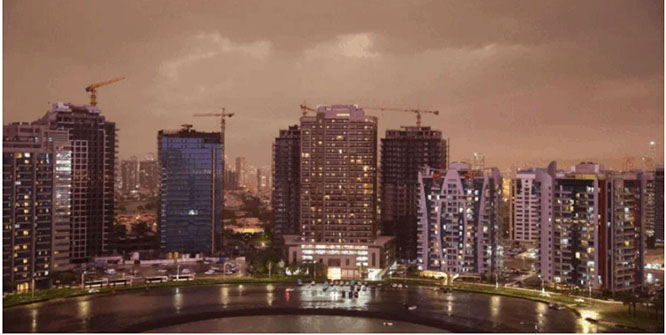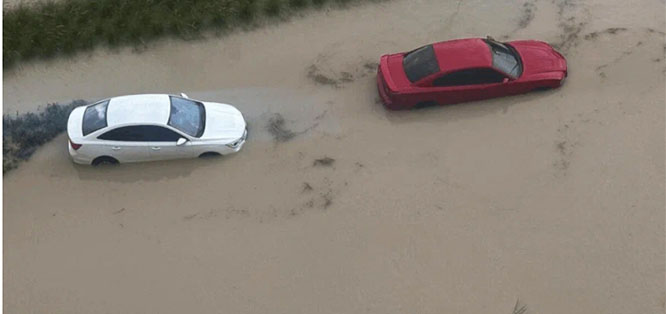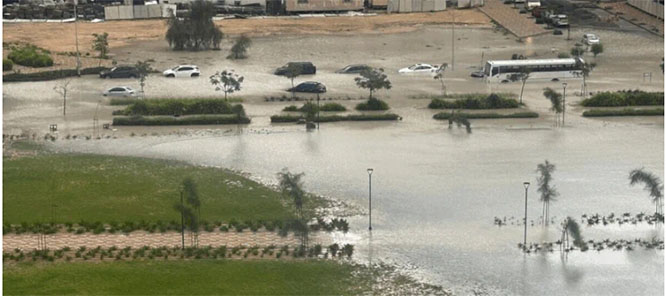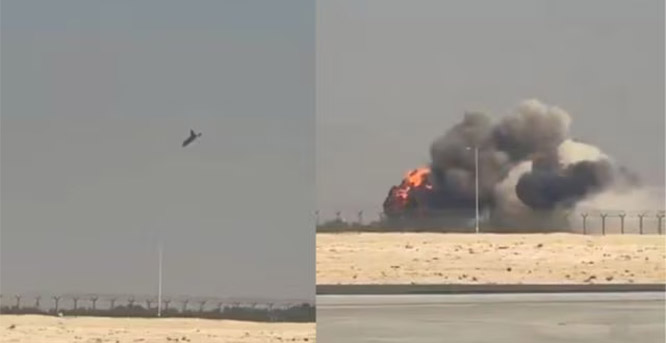
Dubai: Dubai was slapped by heavy floods as the United Arab Emirates (UAE) was hit by extremely heavy rains on Tuesday. The desert city received over a year and a half's worth of rain in just a day even as heavy thunderstorms lashed other parts of the UAE.
Roads turned into rivers as they were filled up with water. Shopping centres like Dubai Mall and Mall of the Emirates were also seen flooding.
Schools across the UAE have been shut and are expected to remain closed on today as well.
According to a report by India Today, Dubai airport received about 100 mm of rain in just 12 hours on Tuesday and a total of 160 mm in the last 24 hours.
On average, Dubai receives about 88.9 mm of rain in a year, which concludes that the city received more than a year's rain in a day.
Dubai International Airport said on Wednesday it was experiencing significant disruption due to bad weather and was working to restore normal operations as quickly as possible.
Flights have been delayed or diverted and impacted by displaced crew, the airport said in a statement, adding that recovery would take some time.
Dubai's Emirates airline said that it was suspending check-in for passengers departing the airport from 8 am (0400 GMT) on Wednesday until midnight due to operational challenges caused by the bad weather and road conditions.
Dubai International was temporarily diverting arriving flights on Tuesday evening because of a storm, and operations were suspended for 25 minutes earlier in the day.
According to India Today, the airport stopped flight operations and issued a warning earlier today on X.
The Dubai International Airport requested the passengers to check their flight status.
Employees in Dubai have been told to work from home.
The UAE Government took to X and said, "Based on the directives of the Council of Ministers, it was decided to extend remote work until tomorrow, Wednesday, April 17, for all federal government employees, with the exception of jobs that require presence at the workplace, taking into account the weather condition that the country is going through."









Comments
Add new comment